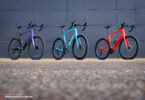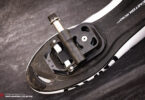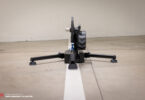A bike of contrasts: a race horse, in the body of a pack mule? The Argon 18 Dark Matter looks nearly indestructible, tailor-made for all kinds of exciting gravel adventures. But how does this all-rounder fare against the competition in our big adventure gravel bike group test?
This bike was tested as part of our 2024 adventure gravel bike group test – you can find an overview of the group test and test field here:
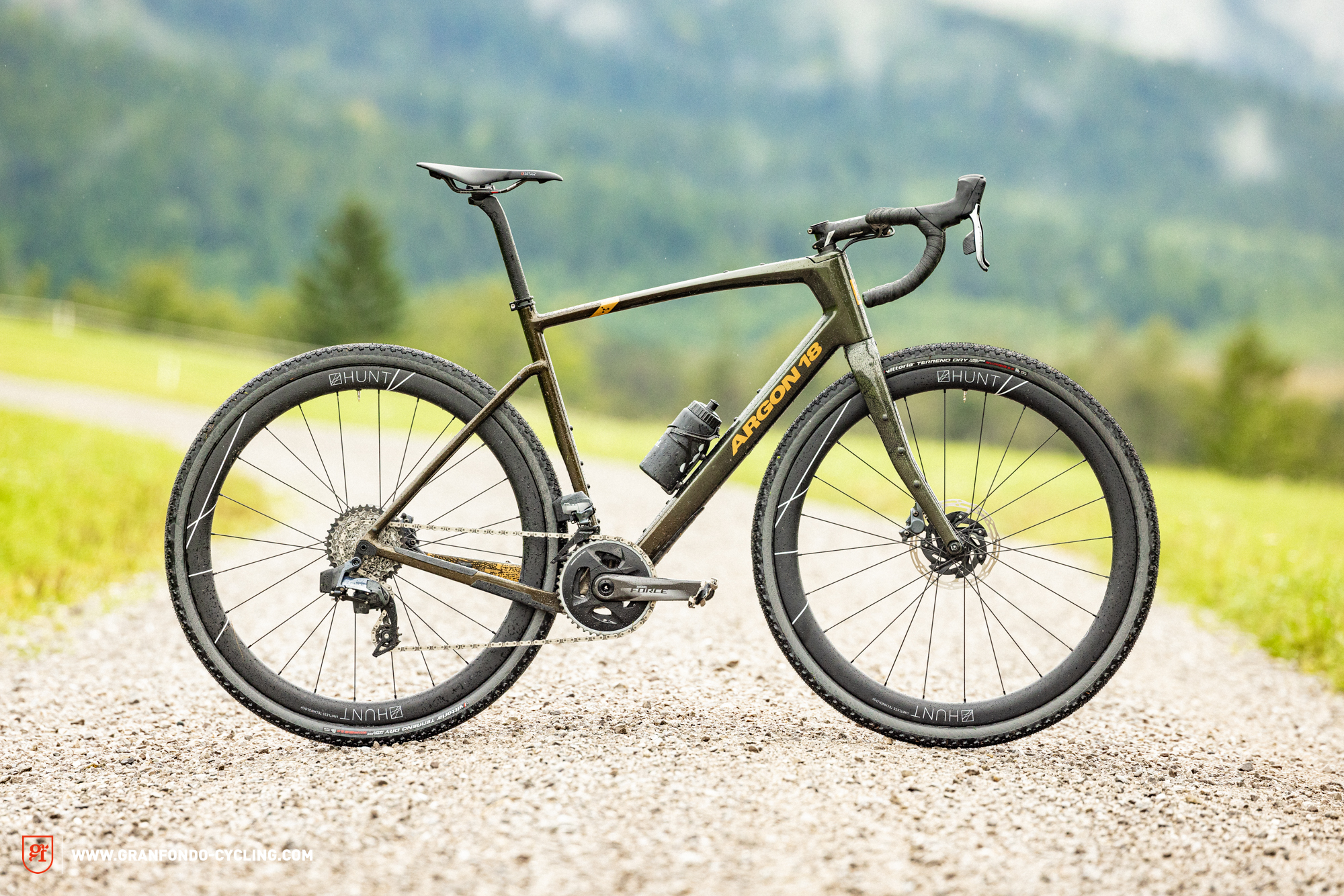
Argon 18 are a firm fixture in our big gravel bike group tests. The Dark Matter already featured in our search for the best gravel race bike. However, the all-road bike doesn’t just claim to excel at racing, but also to serve as the perfect adventure companion. Does it have what it takes to beat the adventure competition and come out on top in this group test? We put the Canadian brand’s speed-focused gravel bike through its paces to find out.

Argon 18 Dark Matter – All-round spec for racing and adventure?
The Argon 18 Dark Matter is a bike that claims to do it all, and the look reinforces that. The beautiful, dynamic design has a chunky, modern look, giving it a robust and racy feel. This is not least due to the long, low cockpit, as well as the deep, gravel-specific HUNT 42 LIMITLESS carbon wheels. Paired with 38 mm Vittoria Terreno Dry tires, you get a capable and fast looking bike. The cockpit consists of a 420 mm FSA A-Wing handlebar and FSA Power OS-99 stem, offering plenty of control and bursting with innovation. The stem is made of an aluminium-carbon blend for extra stiffness and minimal weight. With the ergonomic handlebar, this makes for great performance and looks.
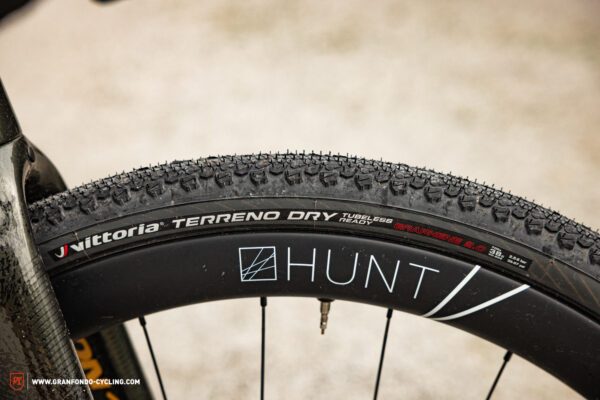
The Hunt carbon wheel and Vittoria Terreno Dry tire combination doesn’t just provide lots of grip, it’s a real eye-catcher too.
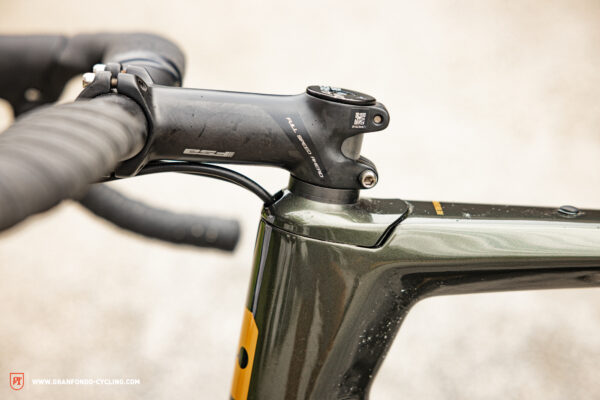
Carbon and aluminium don’t go together, do they? Apparently they do. The FSA combines aluminium with carbon for maximum stiffness and minimum weight.
To bring the sporty all-rounder up to speed, Argon 18 rely on a tried-and-tested SRAM Force AXS drivetrain. Thanks to the 43/30 t crankset and 11–36 t cassette, it should let you tackle any and all adventures. Or not? Having sufficient gears for the optimal cadence isn’t always that important on a gravel bike, but a wide range is indispensable, and despite the 2x setup, it’s rather limited on the Argon 18. The added complexity of a front mech isn’t necessarily what you want on tough gravel roads, but the integrated chain guide keeps the chain securely in place.
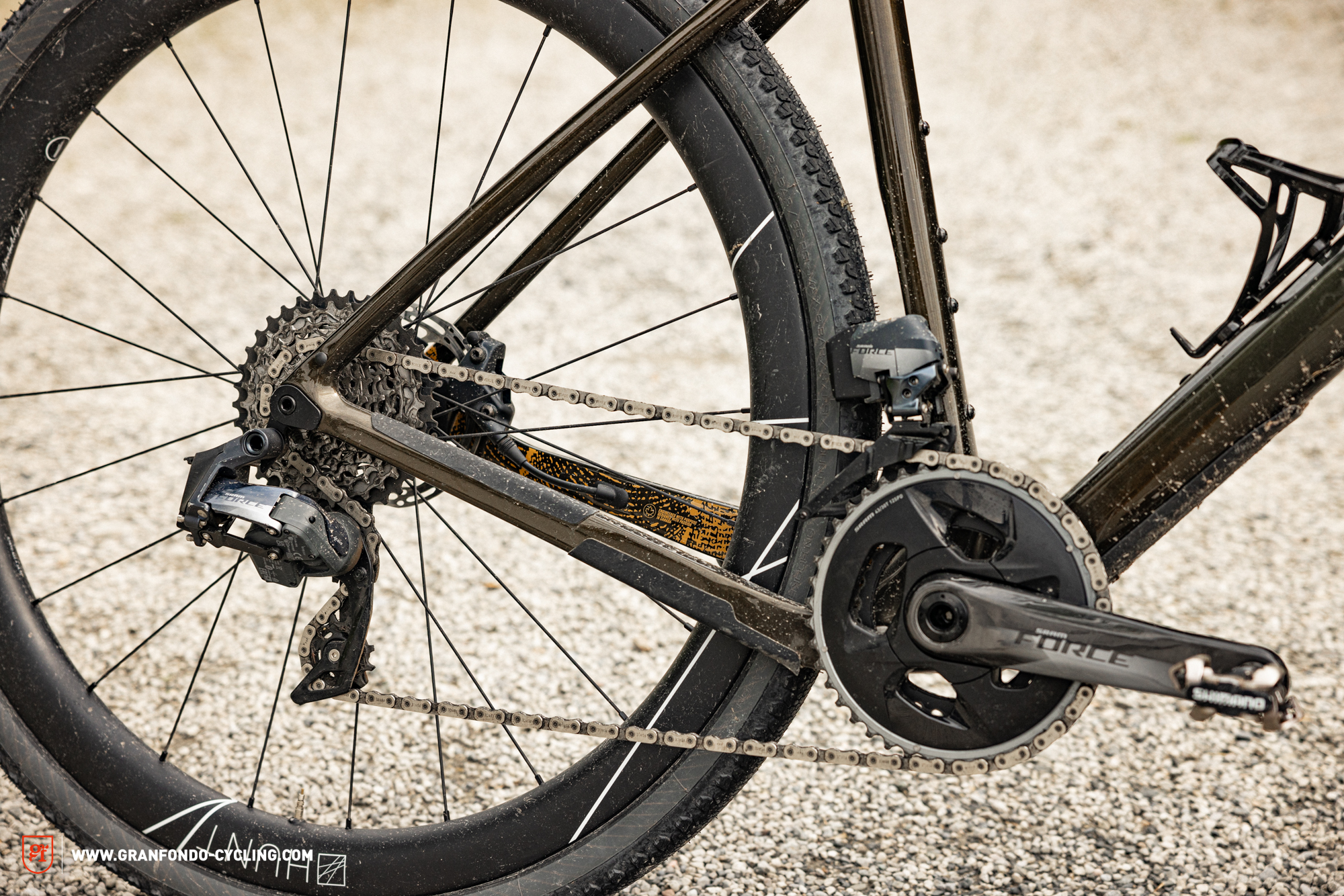
Even those who prefer mechanical groupsets can confidently choose the Argon 18 Dark Matter, because it will even accommodate cable-actuated derailleurs and mechs.
Overall, the spec suits the bike really well. You’ll hardly find better components for a gravel all-rounder than those on the Argon 18 Dark Matter. For those really rugged adventures, however, it could do with a few easier gears, and wider, more aggressive tires.
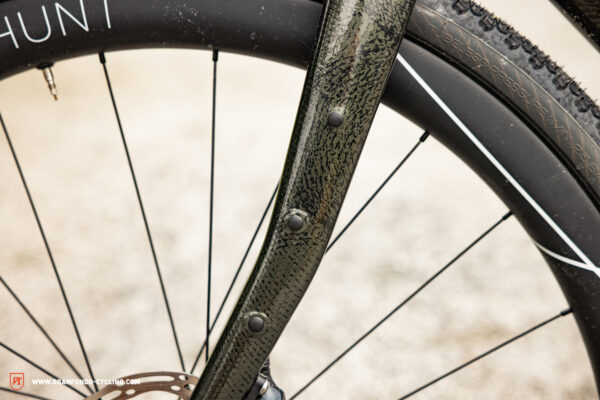
… you can use the bosses on the fork legs to carry your gear. Really cool, especially on this bike!
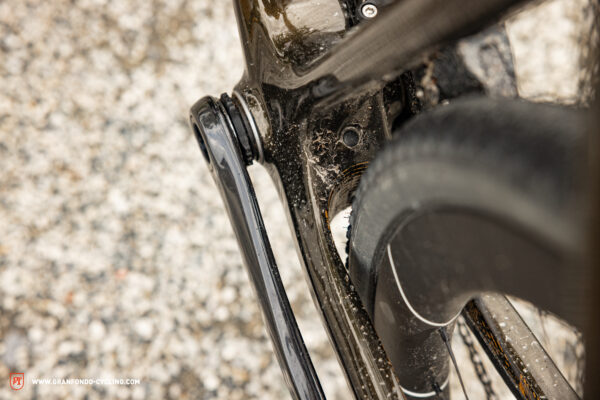
Even the fastest riders must eat, and so the bosses for a top tube bag are great to have on the Argon 18 Dark Matter.
Tuning Tip: A more comfortable seat post for added compliance and grippier tires for more off-road capability
That said, the bike boasts a wealth of mounting points. You’ll find loads of bottle cage bosses inside the front triangle, bosses for a top tube bag, additional bottle cage bosses on the bottom bracket, eyelets and clearance for mudguards, as well as mounting points for front and rear luggage racks, so you’ve got no excuses.
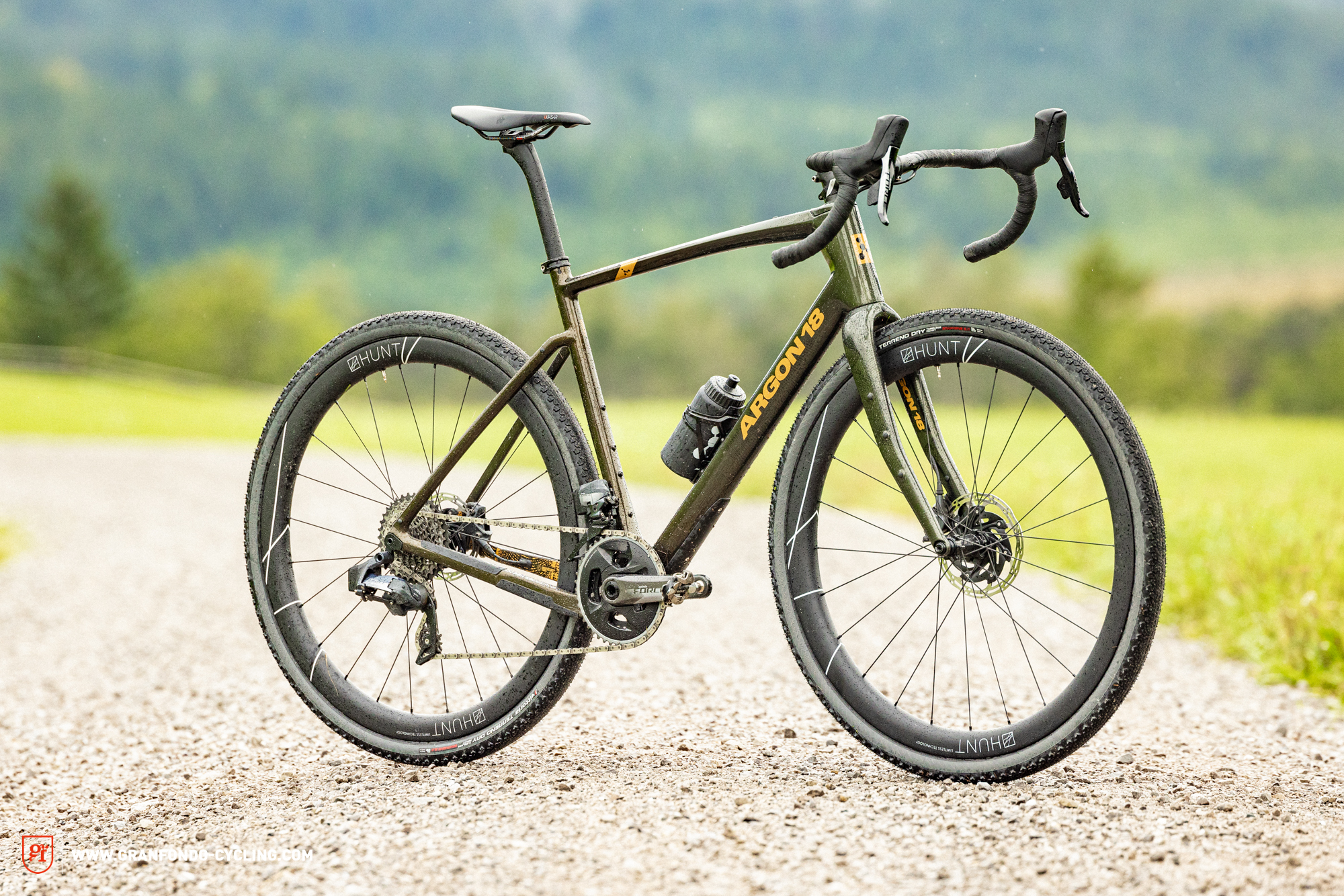
Argon 18 Dark Matter (INT)
€ 6,950
Specifications
Fork rigid fork
Seatpost TDS-C
Brakes SRAM Force 160/140 mm
Drivetrain SRAM Force eTap AXS 2x12
Stem FSA Potence OS-99 100 mm
Handlebar FSA A-Wing 420 mm
Wheelset Hunt 42 Limitless Gravel
Tires Vittoria Tereno Dry 28"
Technical Data
Size XXS XS S M L XL
Weight 8.78 kg
Specific Features
A fast bike, both in looks and handling
Relatively narrow tires
Many mounting points
Composed handling
| Size | XXS | XS | S | M | L | XL |
|---|---|---|---|---|---|---|
| Top tube | 492 mm | 513 mm | 534 mm | 556 mm | 579 mm | 597 mm |
| Seat tube | 420 mm | 450 mm | 485 mm | 520 mm | 555 mm | 590 mm |
| Head tube | 119 mm | 134 mm | 153 mm | 169 mm | 190 mm | 215 mm |
| Head angle | 69.5° | 71° | 71.4° | 72° | 72° | 72.5° |
| Seat angle | 75.5° | 74.9° | 74.3° | 73.7° | 73.1° | 72.5° |
| Chainstay | 428 mm | 428 mm | 428 mm | 428 mm | 428 mm | 428 mm |
| BB Drop | 70 mm | 70 mm | 70 mm | 70 mm | 70 mm | 70 mm |
| Wheelbase | 1,008 mm | 1,011 mm | 1,024 mm | 1,030 mm | 1,046 mm | 1,059 mm |
| Reach | 348 mm | 359 mm | 369 mm | 380 mm | 390 mm | 400 mm |
| Stack | 552 mm | 572 mm | 592 mm | 612 mm | 632 mm | 592 mm |
Pure speed – The Argon 18 Dark Matter has a need for speed like few others
The Argon 18 Dark Matter looks like a fun bike just standing still, and once you climb aboard, it encourages you to push hard and ride fast – in other words, it feels very efficient, though it needs some persuasion through tight corners. The composed handling is tailor-made for self-supported adventures with all your luggage, but the Dark Matter is the wrong bike for winding trails. However, that doesn’t stop the bike: the quick acceleration and wide gear range make it one of the fastest models on test, and not just on the climbs. It really comes to life on fast straights, revealing its full potential. This is underlined by the fast rolling Vittoria Terreno Dry tires and deep carbon rims of the HUNT wheelset. The aggressive cockpit complements the whole thing perfectly and puts you in a fast riding position – slightly uncomfortable for long rides, but perfect for a quick post-work lap and for particularly fit riders.
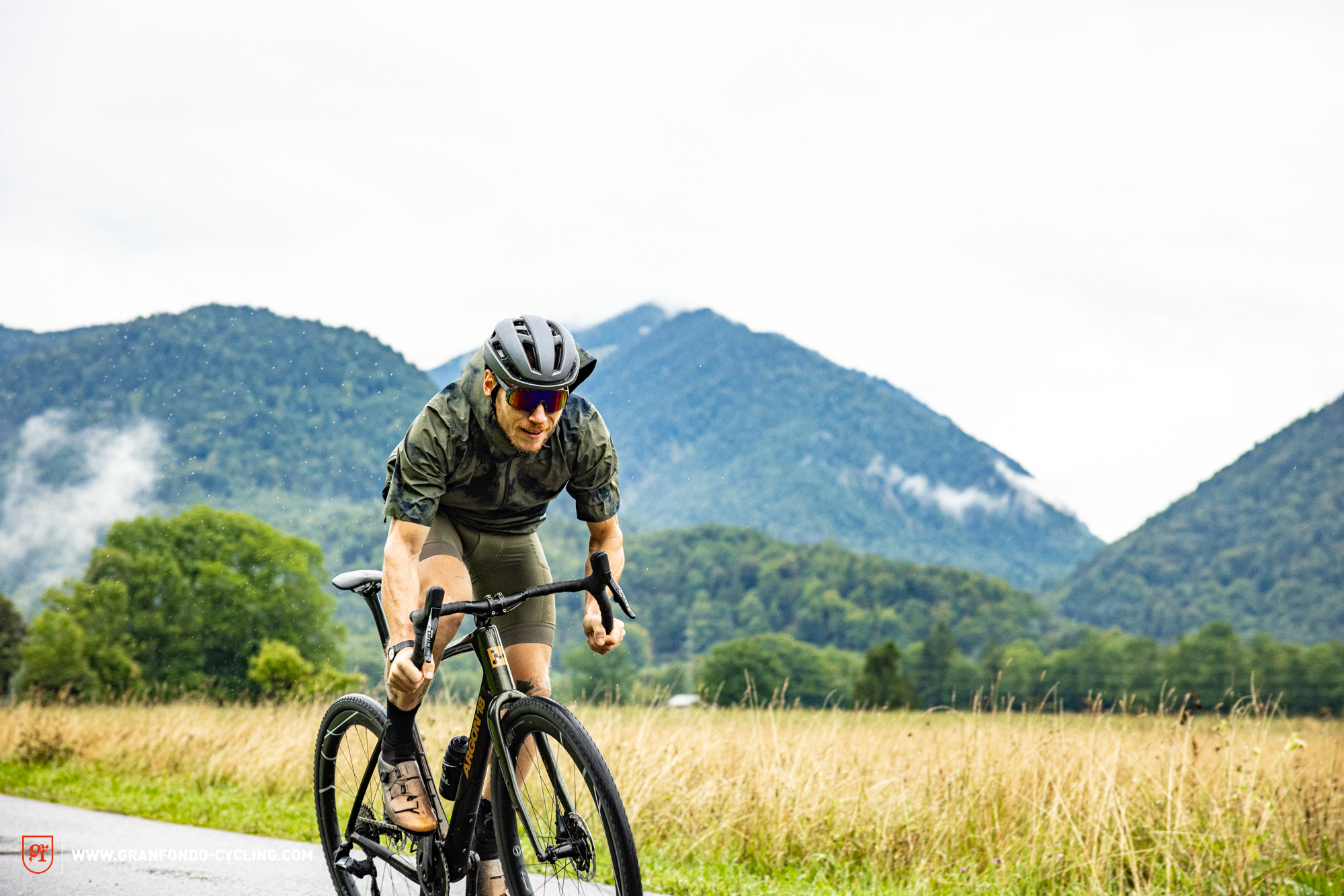
Speaking of comfort, Argon 18 promise to offer the necessary compliance on the bikes of their “Endurance Line” via the “Topological Compliance System”. We only felt that to a limited extent on our test bike. Sure, a shorter stem with more spacers underneath can relax the riding position somewhat, but the frame itself doesn’t offer much compliance. Above all, it’s the tires on the Dark Matter that provide comfort, and by finding the right pressures, you can be comfortable even on long gravel rides, but the fun stops once you turn onto rougher trails. However, that’s not what the Argon 18 Dark Matter is intended for!
A lot of fun to ride, as long as you aren’t riding trails.
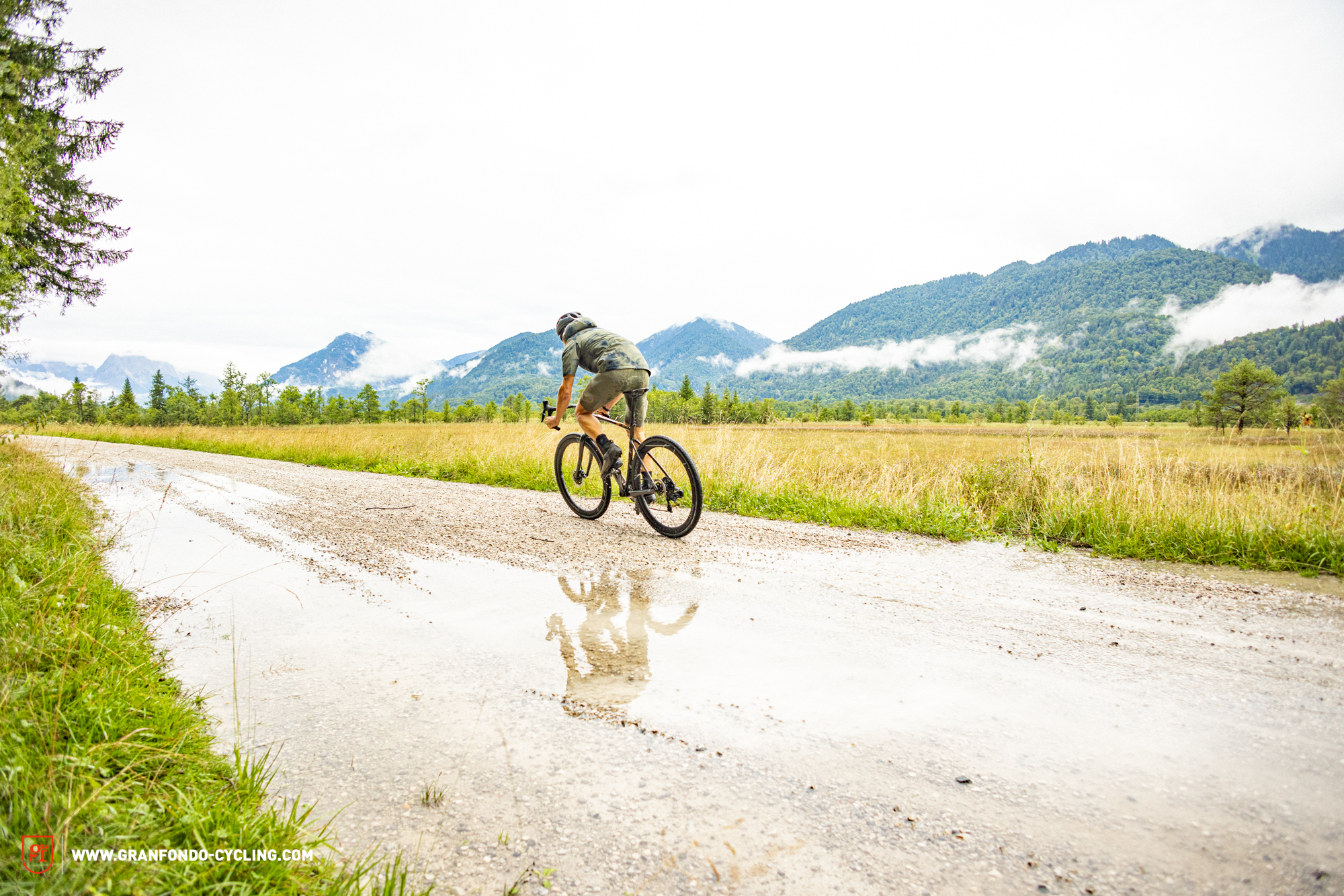
The perfect Argon 18 Dark Matter adventure
The Argon 18 Dark Matter lives up to its reputation as a gravel all-rounder. Its high versatility, non-proprietary components for easy adjustments, and well thought-out build spec suit the bike to a tee. As such, it serves as an excellent basis for almost any gravel adventurer. However, the aggressive, speed focused cockpit limits the bike to some extent and robs it of off-road capability. Bigger, grippier tires and a shorter stem can work wonders here, but that still doesn’t make it the bike of choice for our long-distance expert Martin and his wild jungle adventures.
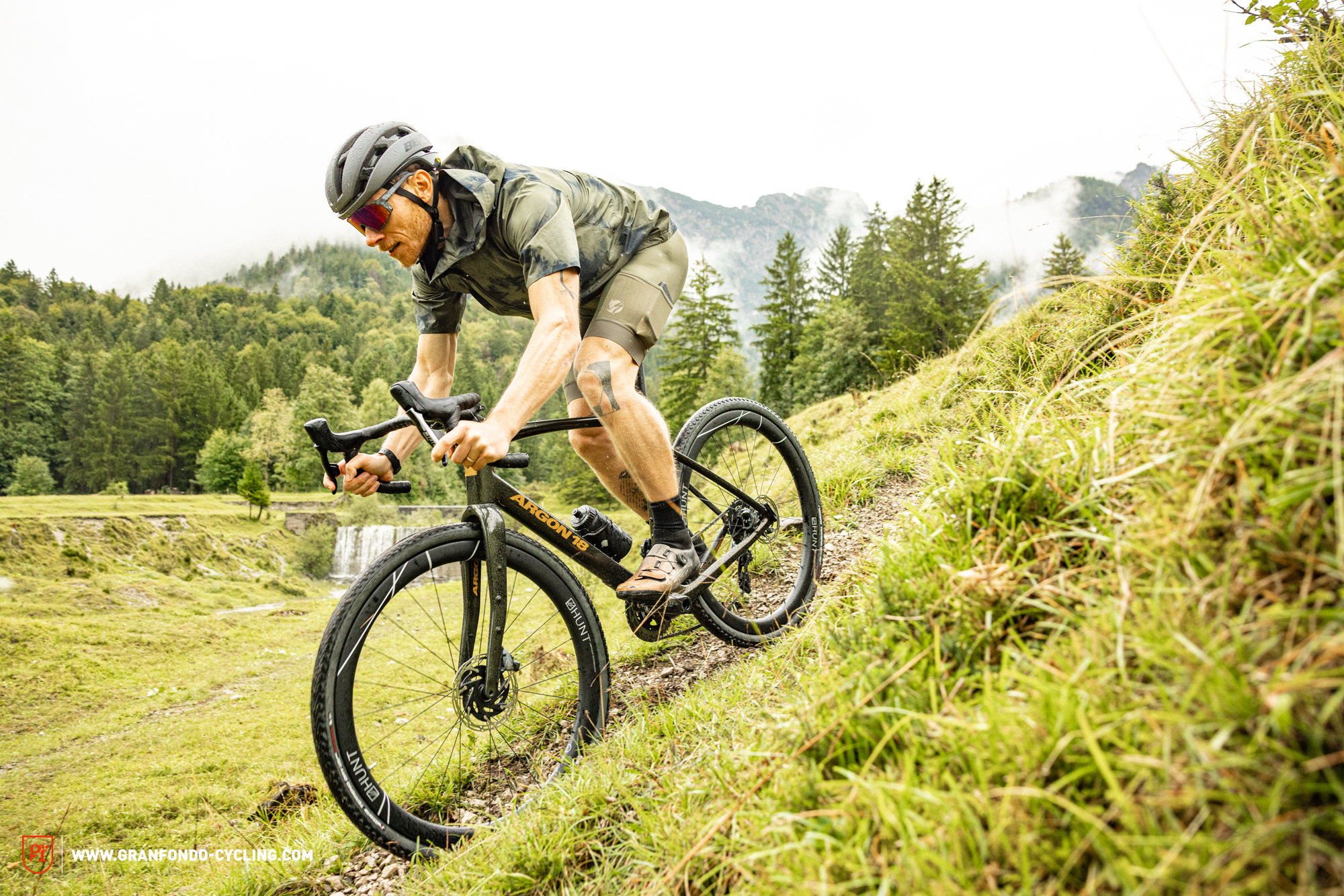
The perfect adventure for the Dark Matter is on fast and firm terrain, making quick work of circumnavigating rough trails, and showing more interest in finish line sprints than touring the world. And it’s not just the frame that’s perfectly tailored to this, but also the components, offering a well-specced build that’s consistent with the intended use. Nevertheless, the wealth of mounting points offers bikepacking potential for those who like travelling fast and are looking for marginal gains.
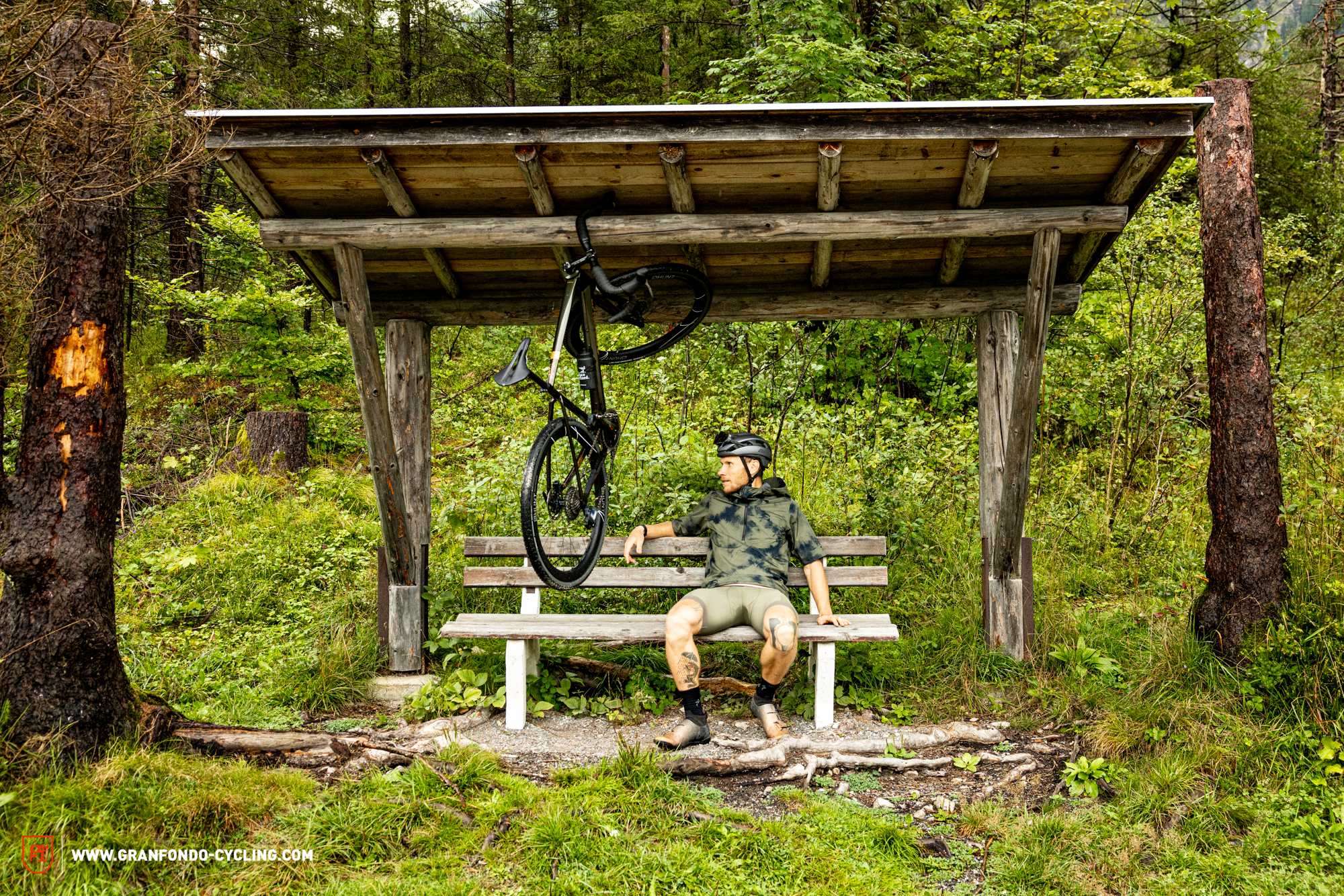
Our conclusion on the Argon 18 Dark Matter
The Argon 18 Dark Matter is a cool and consistently specced bike that should convince most adventurers with a need for speed, thanks to its efficiency and aggressive riding position. The Dark Matter frame also provides an excellent basis for a custom build, because with the right components, you could make this bike serve almost any purpose, including bikepacking. The Argon 18 will only shy away from the craziest off-road adventures.
Tops
- sleek racing look
- A lot of fun on fast, flat roadstons of mounting points for everything your heart desires
Flops
- a lack of compliance for hard off-road use
For more information, visit argon18.com
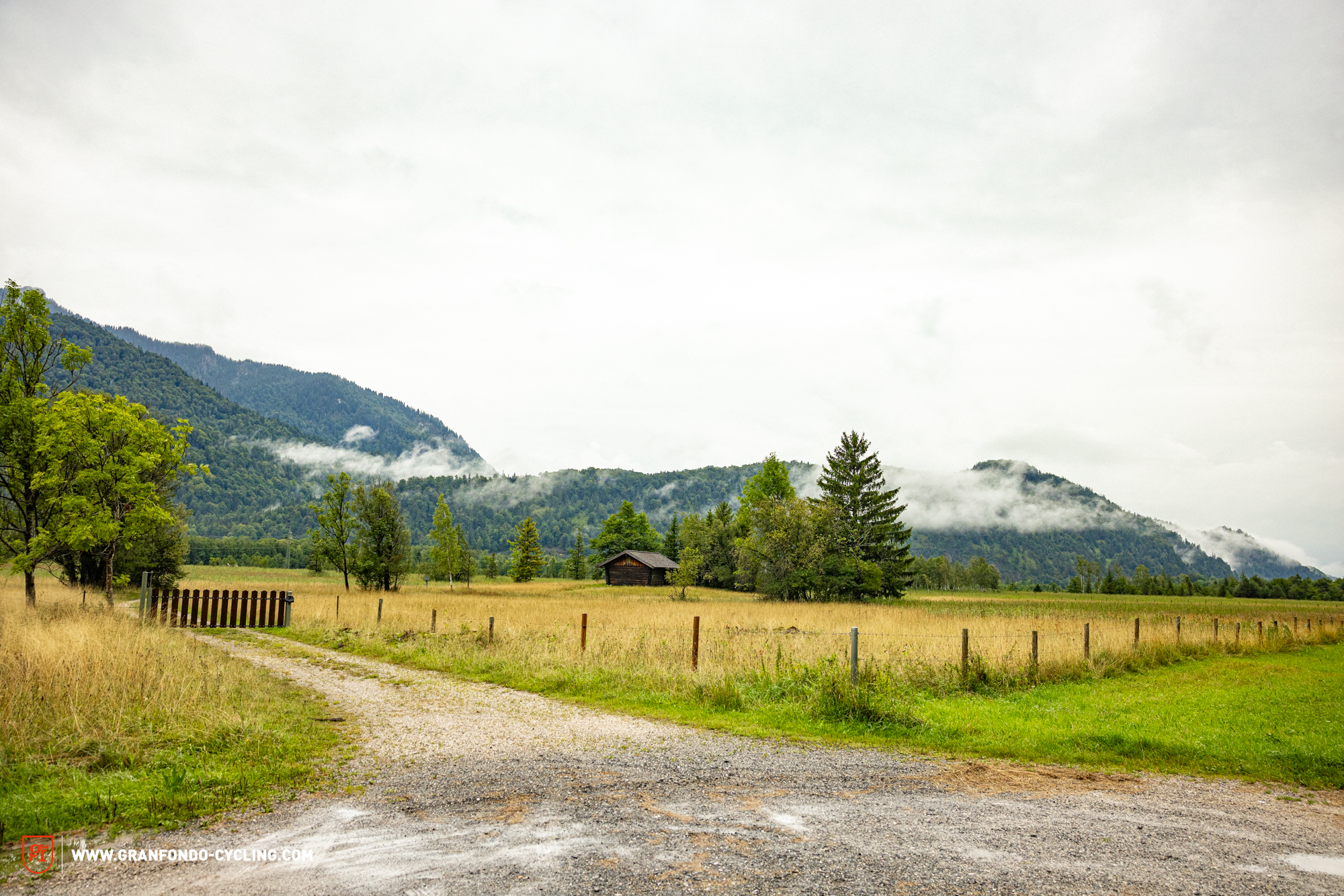
The testfield
This bike was tested as part of our 2023 adventure gravel bike group test – you can find an overview of the group test and the test field here:
All bikes on review:Argon 18 Dark Matter | BMC URS 01 ONE | Cannondale Topstone Carbon 1 Lefty | Canyon Grizl CF SLX 8 Force AXS Trail | Falkenjagd ARISTOS TRAIL GRAVEL | Focus Atlas 8.8 | Ghost Asket Advanced | Giant Revolt X | Merida Silex 10k | Mondraker Dusty XR | Orbea Terra M21e Team Custom M | Ridley Kanzo Adventure | Rose Backroad AL Plus | Santa Cruz Stigmata | Scott Solace Gravel eRIDE 10 | Specialized Diverge STR Pro | Trek Checkpoint SL 7 AXS | Wilier Adlar | YT Industries Szepter Core 4
Did you enjoy this article? If so, we would be stoked if you decide to support us with a monthly contribution. By becoming a supporter of GRAN FONDO, you will help secure a sustainable future for high-quality cycling journalism. Click here to learn more.
Words: Calvin Zajac Photos: Mike Hunger


